- Miscellaneous top
- About Japanese politics
- Upper House Election 2025
- Upper House Election 2022
- From the LDP to the DPJ
- Upper house is needed?
- Nuclear accident at Fukushima
- Japan in March 2011
- Olympic 2020 and COVID-19
- About Japanese society
- Eternal value taker
- Our lost cultural heritage
- Fish consumption in Japan
- Priority seats
- Dangerous bicycles
- Sumo scandal and yakuza
- TV wide show
- About history
- Pujie - Last Emperor’s brother
- Himiko in Hashihaka?
- Far Eastern ancient history
- Foreign topics
- Auckland
- Islamabad
- Moscow
- Teheran
- Kabul
- Death of Tanzania's President
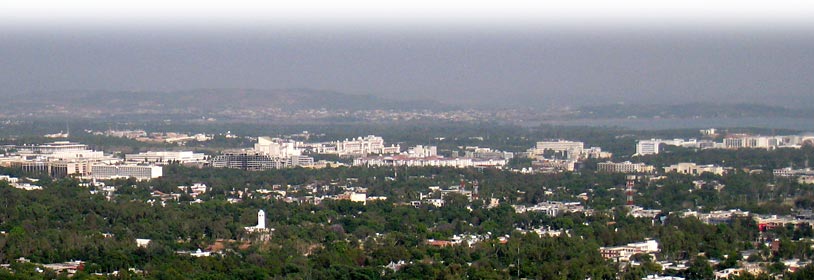
The central part of Islamabad seen from the Margalla Hills
Islamabad - focal point of the international politics
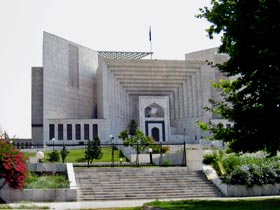
Supreme Court, one of the representative public buildings was designed by a Japanese architect Kenzo Tange.
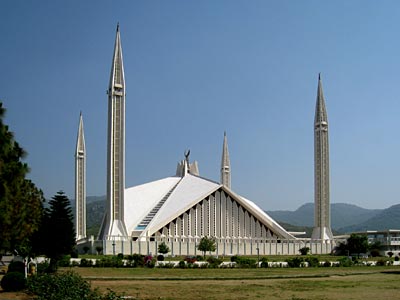
Shah Faisal Mosque
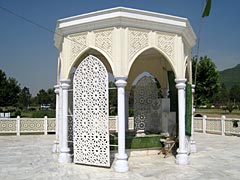
Jia-ur-haq's mausoleum
This time my destination was Islamabad. After changing flights in Bangkok I arrived at the Benazir Bhutto International Airport early in the morning. Islamabad looked quiet and tidy in the morning dawn.
Pakistan recently came under intense international attention, because Al Qaeda leaders fled from Afghanistan and found their shelter in the tribal areas in Pakistan along the border with Afghanistan and the Taliban also shifted its stronghold from Afghanistan to Pakistan and was increasing its influence in Pakistan. The US and its allies came to realize that the main problems in combating terrorism now exist in Pakistan.
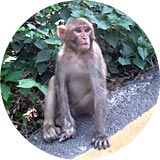 While Pakistan used to have its own problems centered on its rivalry with India, the recent development added a new dimension to its relations with the international community.
While Pakistan used to have its own problems centered on its rivalry with India, the recent development added a new dimension to its relations with the international community.Though Pakistan is not such a huge country as India, it still has the world's sixth largest population and a more than 60 years lasting statehood. Compared with Afghanistan which has been under conflicts in the past three decades and lost a functioning government, Pakistan has an incomparably strong state system. Nevertheless, people in the West started to use the word "Af-Pak" in the context of fighting the problem after September 11 and to think that Pakistan is also a "fail state" like Afghanistan. I am sure that the Pakistanis are by no means happy about such understanding.
There are many internationally active and renowned Pakistanis. I also have several good Pakistani friends, who are very intelligent and communicative. Therefore I cannot believe that Pakistanis cannot run a state in a proper manner. But, they unfortunately have now tremendous difficulties which they can probably solve only by way of using military tools.
I was shocked to see Pakistani newspapers on the day of my arrival, whose articles started with combat against Taliban, casualties during the operation and millions of displaced people in the Swat area. Thus most articles were related to violence and among them scattered some sexy photos of young girls. Nevertheless, the today's newspapers did not look as terrible as on many other days, explained a friend to me.
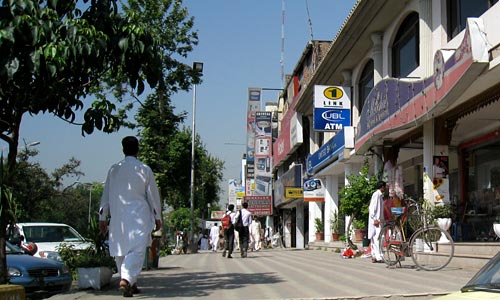
A scene from a market where a bomb exploded several months ago
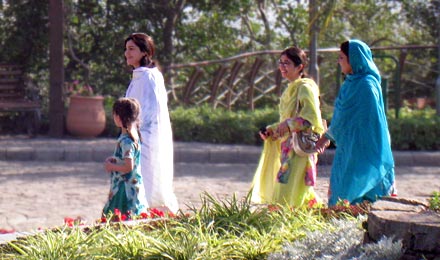
Women's clothes are not strictly bound by religious norms
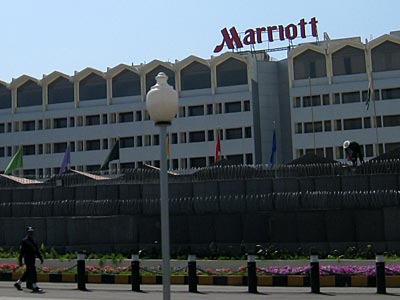
Marriott Hotel. Months after the bomb explosion where at least 60 people lost their lives, the hotel restarted its business, but only behind a thick wall against bombs.
Among a few tourist attractions Shah Faisal Mosque, constructed by Saudi Arabia, was huge and impressive. In its park there was a small mausoleum of the late Prime Minister Zia-ul-Haq, but its stone fence was partly broken and nobody seemed to care much about it, maybe because Pakistanis do not like him much. The Bird's-eye view of Islamabad from the Margalla Hills was beautiful and I was fascinated by wild monkeys in the forest. There were families in the park enjoying nature and relaxed time and there was also a bunch of quiet men squatting and gazing at foreigners - us - with curious eyes.
After having seen tidy sides of the artificial city Islamabad, I wanted to see some chaotic aspects which are common to Asia. A friend guided me first to the "Christian colony", a small quarter between a high-class residential area and a prosperous shopping district. Our driver explained us that they moved here when Islamabad was built, occupied the area illegally and engaged with dirty jobs such as street cleaning. I guessed whether they might be the descendents of the believers of an old Christian sect such as Nestorianism. But, the driver said that they are Catholics and I think he has right. There were missionaries of different churches in the 18th and 19th century under the British rule and some Muslim people converted to Christianity. After the independence of Pakistan Christians chose to stay in the country, while most other non-Muslims such as Sikhs and Hindus fled the country.
Christian children playing
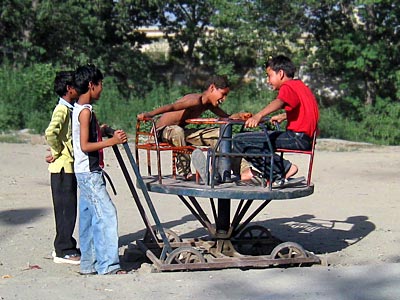

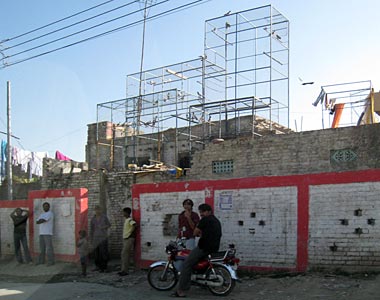
Their houses with a large bird cage
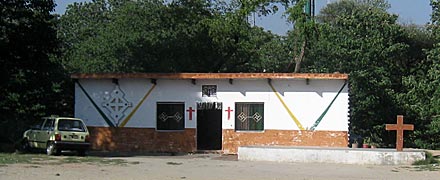
Their church
According to the Government of Pakistan some two million people had to leave their home by now after it had started offensive in Swat Valley about a week ago. Pakistan approaches a crucial moment. The suffering of the Pakistani people would inevitably increase. Out of sympathy for those people, I decided to follow the call by WFP to "support and IDP family for Rs. 6000". I discovered many advertisements calling for donation and became slightly suspicious whether they were trustworthy. I wish my donation will be used in proper way to alleviate the trouble of displaced families. Therefore I chose WFP and hope that I did not make a mistake.
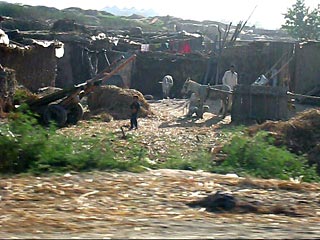
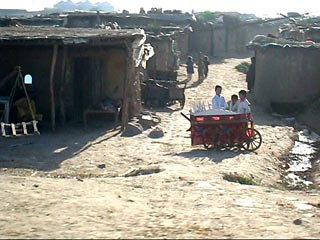
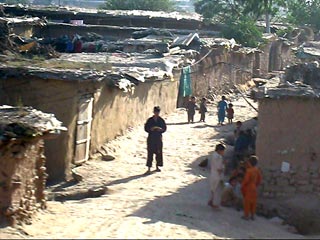
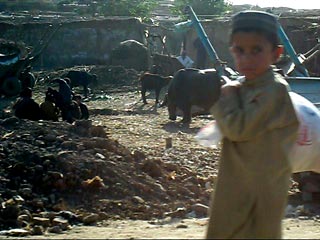
Scenes from the (former) Afghan refugee camp